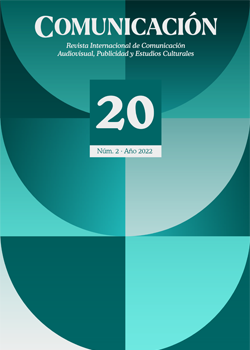Abstract
What were once katana exhibitions aimed at the knowledgeable few have become massive events filled with colourful anime cardboard cut-outs and merchandising of all kinds. This is largely due to the influence of the online video game Tōken Ranbu, starring anthropomorphic versions of Japanese weapons and one of today's most relevant transmedia franchises. We believe that the Tōken Ranbu series' fruitful relationship with the Japanese past, as it has made historical characters its hallmark, the scope and variety of the cast of its animated adaptation, and its ability to link its History with the present, provide the basis for analysing the veracity of the depiction of these legendary weapons to determine whether it is a good way for viewers to get closer to Japanese culture through these deadly works of art.
References
AizuWakamatsu Cirt (n.d). 会津と新選組 (Aizu to Shinsengumi, Aizu y el Shinsengumi [t.a.]), https://www.city.aizuwakamatsu.fukushima.jp/j/rekishi/shinsengumi/rekishi/
Aozora Bunko (2008). 手紙 慶応二年十二月四日 坂本乙女あて 坂本龍馬 (Tegami Keiō ni-nen jyūni-gatsu yokka Sakamoto Otome ate Sakamoto Ryōma, Carta de Sakamoto Ryōma dirigida a Sakamoto Otome del cuatro de diciembre de la era Keiō [t.a.]), https://www.aozora.gr.jp/cards/000908/f iles/51734_40046.html
Bonillo, Claudia (2017). Shinsengumi I: historia y formación de la policía japonesa del período Tokugawa. Ecos de Asia, 24 de mayo, http://revistacultural.ecosdeasia.com/shinsen gumi-i-historia-y-formacion-de-la-policia-japonesa-del-periodo-tokugawa/
Bonillo, Claudia (2021). Guerra, magia y romance durante 'los estados combatientes'. El reflejo del periodo Sengoku (1467/1477-1600) en el anime InuYasha. Mirai. Estudios Japoneses, 5, 223-233, https://revistas.ucm.es/index.php/MIRA/article/view/72870/4564456 558457
Bōsai Jōhō Shinbun (2012). http://www.bosaijoho.jp/reading/years/item_6463.html
Butai Tōken Ranbu (n.d.). https://stage-toukenranbu.jp/
Deal, William E. (2006). Bakumatsu: The End of the Bakufu. Handbook to Life in Medieval and Early Modern Japan. Nueva York: Facts on File.
Eiga Tōken Ranbu (2019). http://touken-movie2019.jp/
Frost, Peter (1970). The Bakumatsu Currency Crisis, Harvard: Harvard University Asia Center.
Hall, John Whitney (ed.) (1991). The Cambridge History of Japan: Volume 4, Early Modern Japan. Cambridge: Prensas de la Universidad de Cambridge.
Hino City, 2020. Izumi no kami Kanesada, https://www.city.hino.lg.jp/shisei/keywords/ 1014655/1014763.html
Ishikawa Museum of History, 2021. https://www.daikashutouten2021.com/
Itō, Seirō (2020). 新選組2245日の軌跡 (Shinsengumi 2245-hi no kiseki), Tokio: Shinchō Bunko.
Jansen, Marius B. (1989). The Meiji Restoration. The Cambridge History of Japan. Reino Unido: Prensas de la Universidad de Cambridge, 308-366.
Katsugeki/ Tōken Ranbu Official Site (n.d.). https://katsugeki-touken.com/
Kenkun Jinja (2018). 薬研藤四郎のご奉納 (Yagen Tōshirō no hōnō, La Donación de Yagen Tōshirō [t.a.]), http://kenkun-jinja.org/guji-kouwa_h301019.html
Kirishima City Website (2021). 龍馬・お龍日本最初の新婚旅行地、霧島市 (Ryōma – O-Ryō Nihon saisho no shinkon ryokō-chi, Kirishima-shi, La ciudad de Kirishima, lugar de la primera luna de miel de Japón, Ryōma y O-Ryō, [t.a.]), https://www.city-kirishima.jp/kirikan/kanko/bunka/ shinkonryokochi.html
Loveridge, Lynzee (2017). Living Swords and Pretty Boys: What Is Tōken Ranbu? Anime News Network, 5 de mayo, https://www.animenewsnetwork.com/interview/2017-05-05/living-swords-and-pretty-boys-what-is-touken-ranbu/.115307
Meo, Analia Lorena (2016). Aproximaciones al anime: producción, circulación y consumo en el siglo XXI. Question, Revista Académica de la Facultad de Periodismo y Comunicación Social, 1 (51), 251-265, http://perio.unlp.edu.ar/ojs/index.php/question/article/view/3416/2874
Min-Kyu, Kim (2003). Sonnō Jōi: The Leaps in Logic in the Modern Japanese Political Scene. Sungkyun Journal of East Asian Studies, 3 (1), 209-237, http://www.bakumatsu.ru/lib/Sonno_ Joi_The_Leaps_in_Logic_in_the_Modern_Japanese_Political_Scen e.pdf
Monumento (2015). 日野市指定有形文化財(工芸品) 刀 (Hino-shi shitei yūkei bunkazai [kōgeihin] katana, Propiedad Cultural Tangible de la ciudad de Hino [artesanía] - katana [t.a.]), https://ja.monumen.to/spots/3449
Munn, Christopher (2001). Anglo-China: Chinese People and British Rule in Hong Kong 1841-1880. Nueva York: Routledge.
Muñoz, Jonathan (2018). Nacionalismo Militarismo y Memoria Histórica en el Anime. Narrativas Visuales, Perspectivas desde Latinoamerica. Colombia: Daza, https://www.academia.edu/ 39927542/Nacionalismo_Militarismo_y_Memoria_Hist%C3%B3rica_en_el_Anime
Myujikaru Tōken Ranbu (n.d.). https://musical-toukenranbu.jp/
NDL (2009). 江戸時代の日蘭交流 (Edo jidai no Nichi-Ran Kōryū, Intercambios culturales entre Japón y Holanda durante el periodo Edo [t.a.]), https://www.ndl.go.jp/nichiran/index.html
NDL (2013). Portraits of Modern Japanese Historical Figures, https://www.ndl.go.jp/portrait/e/
NDL (2021). 日記の世界・榎本武揚:文久2年12月21日(1863年2月9日)の日記より (Nikki no Sekai – Enomoto Takeaki, Bunkyū ni-nen, jyūni-gatsu, nijyūichi-nichi no nikki yori [1863 nen nigatsu kokonoka], El mundo de los diarios – Tomado del diario de Enomoto Takeaki, 21 de diciembre del segundo año de la era Bunkyō [9 de febrero de 1863] [t.a.]), https://www.ndl.go.jp/nikki/citeid/enomoto_18630209/
Plunkett, Luke (2012). The Sad Story of a Japanese Gaming Legend who Pretends War Crimes Never Happened. Kotaku, 4 de diciembre, https://kotaku.com/the-sad-story-of-a-japanese-gaming-legend-who-pretends-5901590
Sagawa Art Museum (2019). Tales of Masterpiece Japanese Swords – The History of Aesthetic Appreciation, https://www.sagawa-artmuseum.or.jp/plan/2019/03/post-94.html
Shibusawa Eiichi Memorial Foundation (2018). 渋沢栄一詳細年譜 (Shibusawa Eiichi shōsai nenpu, Registro cronológico detallado de Shibusawa Eiichi [t.a.]), https://www.shibu sawa.or.jp/SH/kobunchrono/ch1840.html
Shizuoka Prefectural Central Library (2020). 山岡会見記念碑~慶喜助命、江戸無血開城へ~ (Yamaoka Kaiken Kinenbi – Yoshinobu jomei, Edo muketsu kaijō, Placa conmemorativa de las Negociaciones de Yamaoka – Clemencia para Yoshinobu, hacia la entrega pacífica del castillo de Edo [t.a.] ), https://www.tosyokan.pref.shizuoka.jp/contents/history/sisekiannai/siseki_3.html
Shûkan Shōnen Jump, 2021. Tōken Ranbu – Hanamaru, https://www.shonenjump.com/j/ rensai/list/tohken.html
Sugawa-Shimada, Akiko (2015). Rekijo, pilgrimage and ‘pop-spiritualism’: pop-culture-induced heritage tourism of/for young women. Japan Forum, 27 (1), 37-58.
Sugawa-Shimada, Akiko (2022). Tōken Ranbu and samurai swords as tourist attractions. War as Entertainment and Contents Tourism in Japan, Reino Unido: Routledge, 56-60, https://www.taylorfrancis.com/chapters/oa-edit/10.4324/9781003239970-10/t%C5%8Dken-ranbu-samurai-swords-tourist-attractions-akiko-sugawa-shimada
Sýkora, Jan (2010). The Economic Thought of Shōji Kōki and the Tenpō Reforms in Saga Domain. Economic Thought in Early Modern Japan Vol.1, Boston, Brill, 157-179.
The Sakamoto Ryoma Memorial Museum (2018). 所蔵品 (Shozōhin, Piezas de la colección [t.a.]), https://ryoma-kinenkan.jp/document/
Tōken Ranbu Sōgetsuka (2022). https://toku.touken-hanamaru.jp/
Tōken World (n.d.). 刀剣女子について (Tōken joshi ni tsuite, Sobre las mujeres espada [t.a.]), https://www.touken-world.jp/tips/49018/
Tokyo Trip (2021). 江戸開城 西郷南洲 勝海舟会見の地 (Edo kaijō Saigō Nanshū Katsu Kaishū kaiken no chi, La capitulación del castillo de Edo, la tierra donde se encontraron Katsu Kaishū y Saigō Nanshū [t.a.]), https://tokyo-trip.org/spot/visiting/tk0431/
Tsurugi no ya (n.d.). Horikawa Kunihiro, https://www.tsuruginoya.net/stories/horikawakunihiro/
Yamaguchi, Tomomi (2017). The 'Japan Is Great!' Boom, Historical Revisionism, and the Government. The Asian-Pacific Journal, 15 (6-3), https://apjjf.org/2017/06/Yamaguchi.html
Watabe, Kohki (2021). Japanese Swords as Symbols of Historical Amnesia: Touken Ranbu and the Sword Boom in Popular Media. The Asian-Pacific Journal, 19 (7-1), https://apjjf.org/2021/7/Watabe.html

This work is licensed under a Creative Commons Attribution-NonCommercial-ShareAlike 4.0 International License.
Copyright (c) 2022 Claudia Bonillo Fernández

